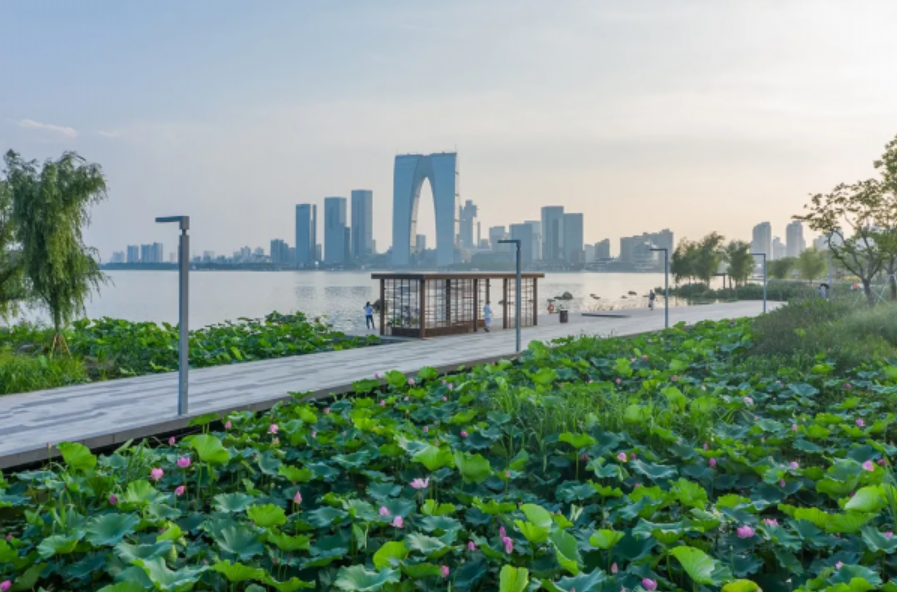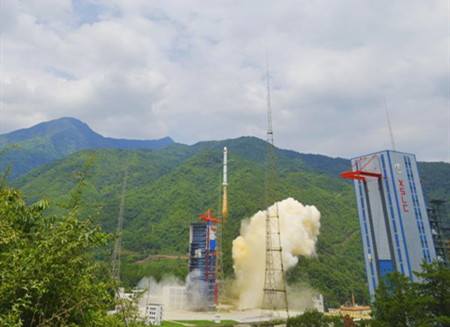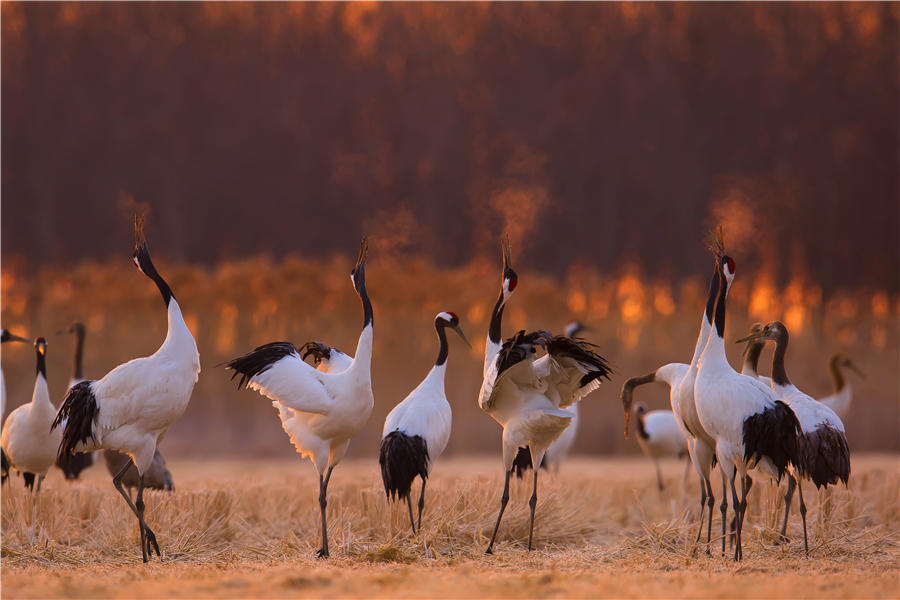
World Heritage Site boosts area in Jiangsu
Two years after he retired in 2014, Zhu Xianwen became a wetland protection consultant in a coastal township of Jiangsu province.
Zhu, 65, worked as a fisherman and in fishery management for most of his adult life.
He now promotes the importance of wetland protection for marine and migratory birds among fishermen. To improve conditions for migratory birds, he has even persuaded some of the fishermen to return their ponds to the local government.
Zhu's work coincided with his hometown's inclusion in July as part of a UNESCO World Heritage Site-the Migratory Bird Sanctuaries along the Coast of Yellow Sea-Bohai Gulf of China (Phase I).
Until three years ago, he had no idea that the intertidal mudflats near his hometown, Jinggang township in Yancheng, would become one of the core zones of the heritage site.
Zhu said that he knew that the mudflats area facing the Yellow Sea, known locally as Tiaozini, was rich in fish, crabs and clams.
Food has attracted many birds to the area, he said.
However, he never thought that the mudflats would become so important to migratory birds, resulting in their being listed as part of a World Heritage Site.
The Jiangsu provincial government has dropped its ambitious plan to reclaim 66,667 hectares of mudflats in Yancheng, a large part of which overlaps with Tiaozini.
"Being a World Heritage Site will save our mudflats from land reclamation, which in turn will ensure fishermen's livelihoods for generations," Zhu said."To be honest, that's why I am willing to work for the cause of conservation."

Great sacrifices
Yuan Yongjun, deputy director of the city's development and reform commission, said, "To realize Yancheng's commitment to the international community while bidding for the World Heritage Site, the city government has had to make great sacrifices."
He said that in 2010, the city's major strategy was marine economic development. The Tiaozini mudflats in Dongtai, a county-level city in Yancheng, were planned for such development.
"There was to be land for ecological use, for agriculture, for industry and even for a port," he said. "It would come from reclamation of the mudflats."
Wu Qijiang, director of the city's World Heritage Site bidding office, said that under the plan, the main target was the mudflats at Tiaozini, 10 percent of which had been reclaimed in 2012 and 2013, partly for agriculture and aquaculture.
In launching the World Heritage Site application in 2016, Wu said the government had not considered including any part of the Tiaozini area.
Yancheng has two nature reserves-the Dafeng Milu Deer National Nature Reserve and the Yancheng Rare Birds National Nature Reserve. "The two were initially the major areas nominated for the site," Wu said.
Wen Cheng, a member of the National Forestry and Grassland Administration's World Heritage Expert Committee, said two experts from the International Union for Conservation of Nature made a field trip to Yancheng in October 2018 and suggested expanding the nominated area for the World Heritage Site to include Tiaozini.
The IUCN is an international organization working in the field of nature conservation and the sustainable use of natural resources.
Since 2017, Wen, who took part in the entire nomination process for the World Heritage Site, has made dozens of field trips to Yancheng.
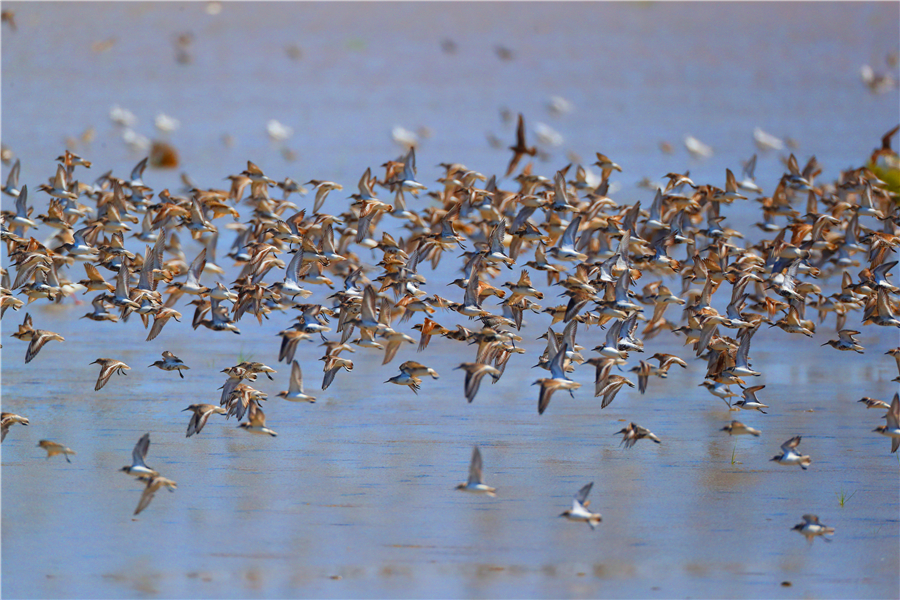
During the nomination process, he said there had been a noticeable shift in attitude toward conservation policy.
In May 2017, China promulgated its first regulation on coastlines, requiring that at least 35 percent of the total coastline should remain undeveloped until 2020.
In July 2018, the State Oceanic Administration stopped approving reclamation projects, except for those passed by the central government aimed at infrastructure construction, public services and national defense, for the rest of that year.
Against this backdrop, Yancheng announced that the Tiaozini Wetland Park, occupying 12,746 hectares, would be built and that the entire Tiaozini area would be added to the World Heritage Site nomination.
As a result, the Phase I heritage site covers 186,400 hectares, taking in Dongtai, Sheyang county and Dafeng and Tinghu districts.
Yuan, from the Yangcheng development and reform commission, said placing Tiaozini under preservation means it can no longer use encroaching land for economic development.
Land in Yancheng near the Yangtze and Yellow river estuaries, rich in sediment from the two rivers and which took up 582 kilometers of coastline, had continued to encroach toward the Yellow Sea.
This area had expanded by 2,000 to 3,333 hectares a year, Yuan said. But now, as the upstream sections of the rivers have become much cleaner, this encroachment has fallen to about 500 hectares.
"We got the land for nothing," Yuan said. "It had long been considered for economic development. Now, it will become a habitat for birds."
Yu Quansheng, deputy director of Yancheng's nature resources and planning bureau, said many development projects within the heritage site will gradually be ended.
Fishing ponds or farmland rented to individuals or private companies-often by governments at all levels-have to be bought by the authorities even though the leases are not due to expire, including a 533-hectare reservoir in Tinghu district.
"The rent for 1 hectare of water is usually more than 15,000 yuan ($2,156) a year," Yu said. "Some 600 million to 700 million yuan will be needed to buy land in Dafeng and Sheyang. This has become a budgetary burden."
In addition, he said court action has been taken in some cases to obtain land.
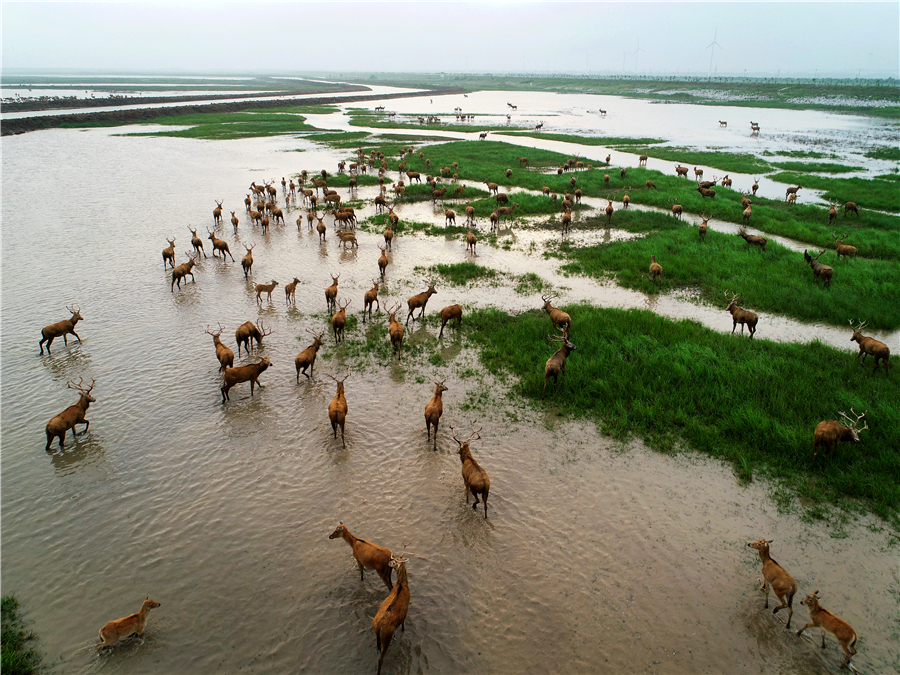
Ecological gains
Although Yancheng will experience some economic losses, Wu, from the bidding office, said there are obvious ecological gains.
By placing its mudflats under preservation, China has acquired its first intertidal wetland heritage site.
Due to land reclamation, encroachment of spartina (also known as cord grass), environmental pollution, overfishing and overcultivation, Wu told Global Times that coastal wetland has suffered the most, compared with other types. From 2003 to 2013, China witnessed the loss of 1.3 million hectares of such wetland.
He said that under the original plan, migratory bird sanctuaries included 16 nature reserves in Jiangsu, Shandong, Hebei and Liaoning provinces. However, he said protection measures for many of these reserves have been unsatisfactory and do not meet the requirements for a World Heritage Site.
Although the Phase 1 site includes only two nature reserves in Yancheng, the 186,400-hectare nominated area occupies 42 percent of that planned for the bird sanctuaries. As a result, international experts suggested that Yancheng bid first. It did so and was accepted.
Wu said: "The importance of our wetlands, especially the intertidal mudflats, to migratory birds on the East Asian-Australasian Flyway has been hard to match elsewhere in the country."
The flyway is one of the world's nine leading migratory routes. In the north, it stretches from Siberia in Russia to Alaska, and in the south it encompasses Australia and New Zealand. It passes through 22 countries with some 55 migratory wading bird or shorebird species using it. The total number of birds flying the route is estimated at about 5 million.
Yancheng is in the middle of the flyway. Wu said that every year some 3 million migratory birds, especially shorebirds, make stopovers, breed or spend the winter on wetlands in the area, especially Tiaozini.
Of these birds, more than 80 percent of the world's spoon-billed sandpipers, a critically endangered sparrow-sized shorebird, make stopovers during their migration between their breeding grounds in Siberia and their wintering grounds in the south. "There are only about 200 breeding pairs and 100 of these young birds left in the world," Wu said.
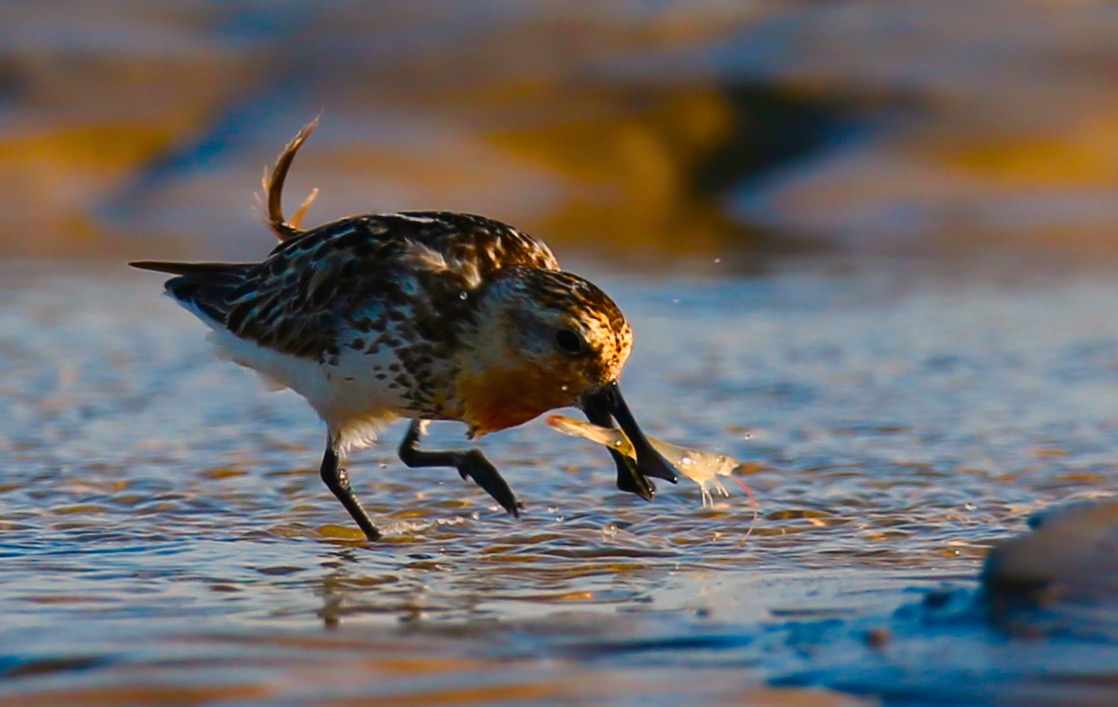
Almost 80 percent of the world's Nordman's greenshanks, another shorebird, use the Tiaozini mudflats as a break during their migration. At least 40 percent of China's wild red-crowned cranes, or more than 200 birds, winter at the Yancheng Rare Birds National Nature Reserve.
A total of 17 species of endangered migratory birds depend on the coastal wetlands to complete their migration."Our wetlands are a 'gas station' for migratory birds," Wu said."They are vital for their survival."
After the bidding success, Wu said Yancheng drafted its three-year (2019-21) plan for sustainable development of the heritage site.
A wetland research institute and a museum are being built; ecotourism projects have been launched; some reclaimed land for economic use will be returned to nature or left for restoration; and an international wetland conference and a bird race will be held annually.
Yu, from the nature resources and planning bureau, said regulations on Yellow Sea wetland conservation, approved by the authorities in Jiangsu, have been implemented since Sept 1. "This provides legal support for our management of the heritage site," he added.
In Jinggang township, the local government is spending about 60 million yuan on a project to return fish ponds to the wetlands. As a result Zhu, the consultant, is busy with his work persuading fishermen to return their ponds to nature.
He said that this is not too difficult, because the fishermen know the land they return will be used for conservation, not for any other economic development projects.
"Conservation suits them," Zhu said. "If they knew the land would be used for a chemical plant, believe me, the fishermen could turn very nasty."



